Table of contents
The velvet foot bolete ( Flammulina velutipes or filiformis) is an edible mushroom that grows naturally on deciduous trees during the winter months, which is why it is also called winter bolete or winter mushroom. In Japan, the mushroom is known as enoki (enokitake), and in Asia it is cultivated and grown on a large scale.
Common velvet foot - Use in the kitchen:
The frost-resistant winter mushroom, which is brownish to golden in nature, needs tree trunks or dead material from various deciduous trees to grow, on which it forms dense clumps. 1 Velvet foot mushrooms collected from the forest yourself: The lower part of the stem can be tough or woody, which is why it is removed before use. Wet mushrooms are smooth, shiny and often slimy. If that bothers anyone - the mushroom skin can be easily peeled off when cleaning.
Cultivated mushrooms are mostly completely usable. Both types of mushrooms can be brushed with a fine brush. Washing them is not recommended, as the Enoki mushrooms will otherwise taste watery.
Are Enoki mushrooms poisonous? The answer to this question is no. In Asia, the Enoki is one of the most popular edible mushrooms. In order to meet the high demand, the common velvet foot is being cultivated more and more frequently . The cultivated specimen is much more delicate than the wild velvet foot, it has a tiny cap and a particularly long stem. The color is also different: the cultivated Enoki is usually white (cultivated in the absence of light) and occasionally golden brown (Golden Enoki, Golden Needle) - the naturally growing one is honey yellow to reddish brown. In China, Japan and South Korea in particular, the cultivated velvet foot is used to refine numerous dishes.
What do Enoki mushrooms taste like? The taste of Enoki mushrooms is mildly nutty and sweet. Its texture is tender and crunchy to the bite, and it remains firm even when cooked. The mushroom can be eaten cooked or raw, although the latter should be eaten in moderation (see the Dangers - Intolerances - Side Effects chapter below).
Enokis are ideal for soups, stews and braised dishes. The small mushrooms are also popular as raw food in salads; grilled, steamed, fried or baked, they add flavour to pasta, rice or other side dishes. They can also be prepared with various seasoning sauces (e.g. soy sauce, mirin) or with spices (e.g. chili) and herbs (e.g. parsley, coriander).
Vegan velvet foot chanterelle recipe with garlic:
Ingredients (for 2 people): 300 g enoki (organic if possible), 4-5 cloves of garlic, a spring onion, a chili pepper, 1 tbsp rapeseed oil, 2 tbsp soy sauce, 1 tbsp water, a pinch of sea salt if necessary, 1 tsp cumin powder, 1 tbsp sesame seeds.
Preparation: For this vegan mushroom ragout, preheat the oven to 200 °C. In the meantime, prepare the enoki mushrooms by brushing them clean. Chop the garlic, spring onion and chili. Mix the rapeseed oil, soy sauce, water and chili (with salt) in a bowl. Put the mushrooms in a casserole dish, spread the sauce on top and sprinkle with cumin powder. Cover the dish with a lid or aluminum foil and cook the mushrooms in the oven for about 20 minutes. Just before serving, sprinkle the garlic, spring onion and sesame seeds over the vegan dish.
Vegan Enoki recipes can be found under the note: " Recipes that have the most of this ingredient ".
| Not only vegans or vegetarians should read this: Vegans often eat unhealthily. Avoidable nutritional errors. |
Shopping - where to buy Enoki mushrooms?
In Europe, Enoki mushrooms are rarely available fresh in supermarkets such as Coop, Migros, Denner, Volg, Spar, Aldi, Lidl, Rewe, Edeka, Hofer etc. or in organic supermarkets ( Alnatura, Denn's Biomarkt). You can sometimes find the common velvet foot mushroom at weekly markets run by hobby growers. Dried mushrooms or mushroom spawn substrates for growing yourself are available in some Asian shops or online shops. You can also buy dried enoki mushrooms or mushroom breeding cultures (mushroom substrates) online in organic quality. The organic label means that the substrates consist mainly of untreated wood. 14
Enoki mushroom - Found in the wild:
In the temperate and cold regions of the northern hemisphere (and also in a few regions of the southern hemisphere), Enoki mushrooms grow on weakened deciduous trees or on their stumps or fallen branches. They prefer willows, poplars, ash trees, elders and elms. In Europe, the young to half-grown mushrooms can be harvested from September to April. Their orange caps are domed or slightly humped. If the edges of the caps are broken, the mushrooms are too old to be used. We recommend consulting a mushroom identification guide before collecting.
Storage:
Enoki mushrooms will keep in the refrigerator for up to a week, provided they are brushed clean and dry. Alternatively, you can freeze enoki mushrooms and use them straight from the freezer in soups, stews and casseroles.
Ingredients - nutritional values - calories:
The velvet foot bolete is low in calories (37 kcal per 100 g). With 2.7 g of protein per 100 g, it is lower in protein than other famous edible mushrooms, such as porcini mushrooms (5.4 g/100g) and king oyster mushrooms (3.3 g/100g). Fat is sparse (0.29 g/100g). 2 Fluctuations in ingredients are not unusual in fresh mushrooms.
With around 7 mg of niacin (ex vitamin B3) per 100 g, the enoki covers 44% of the daily requirement. Raw porcini mushrooms contain a similar amount of niacin (8.4 mg/100g). The leader, the sea buckthorn berry, has a particularly high amount of niacin when raw, at 743 mg/100g. 2
Enoki contain about 48 µg of folate (folic acid) per 100 g, which covers 24% of the daily requirement. Raw oyster mushrooms contain a similar amount of folate (38 µg/100g). Lentils are considered to be a food with a very high folate content (479 µg/100g). 2
Thiamine (vitamin B1) is contained in the common velvet foot mushroom at around 0.22 mg/100g (20% of the daily requirement). Germinated wheat (0.22 mg/100g) and germinated lentils (0.23 mg/100g) have a similar thiamine content. Linseed, for example, contains particularly high levels of thiamine (1.6 mg/100g). 2
You can find all the ingredients of the common velvet foot bolete, the coverage of the daily requirement and comparison values with other ingredients in our nutrient tables. In the article Nutrients explained you will get a detailed insight into the topic.
Health aspects - effects:
The velvet foot mushroom has a beneficial nutrient content, a low fat content and a good ratio of polyunsaturated fatty acids. The Enoki is an excellent food for a low-calorie diet. 3
Are Enoki mushrooms healthy? Enoki mushrooms contain phenols and phenolic acids, which are known to have antioxidant properties. They protect the body from diseases associated with oxidative stress and cellular changes, such as cancer, cardiovascular disease and diabetes. 3,13
F. velutipes is also one of the medicinal mushrooms that has immunomodulating activities and can therefore strengthen the organism. Due to the active ingredient FIP (Fungal Immunomodulating Protein), it has modulating effects on the immune system and thus works against allergies, prevents infections and could potentially be used in virus prevention and therapy. 3
There are countless other beneficial effects of this medicinal mushroom. Some of them are: anti-tumor, anti-cancer and anti-atherosclerotic properties, thrombosis inhibition, antihypertensive and cholesterol-lowering effects, anti-aging properties, ability to restore neurotransmitters (improving memory and learning functions), anti-inflammatory and antibacterial activities. 3,13
Dangers - Intolerances - Side effects:
Can you eat Enoki mushrooms raw? The Federal Center for Nutrition ( BZfE) classifies mushrooms as foods that are difficult to digest. On websites you can read that raw Enoki mushrooms are inedible because of their high fiber content. This is basically nonsense, because fiber promotes digestion. On other websites you can read that raw velvet foot mushrooms, i.e. Enoki, are edible without any problems. This is also not true.
A study published in 2018 examined the effects of consuming dried and then powdered F. velutipes on laboratory mice to analyze the effects of the protein 'flammutoxin'. After five consecutive days of 6-9 grams per kg of body weight per day, the researchers found increased activity of the enzyme creatine kinase, which is important for the energy metabolism of muscle cells. This increased activity indicates a potentially harmful effect on skeletal muscle and heart muscle. The authors point out that the amount studied in laboratory mice corresponds to approximately 190-280 g of fresh F. velutipes in humans, taken on five consecutive days. However, it is not clear from the scientific literature whether eating the mushroom raw in these quantities effectively results in an unhealthy dose of flammutoxin for humans. 4
To be on the safe side, you should only eat enoki mushrooms raw in small quantities sporadically. However, if you cook them, there should be hardly any complications. On the one hand, it is assumed that the effect of flammutoxin can be neutralized by heat - and on the other hand, cultivated enokitake is a very popular and often used edible mushroom.
Folk medicine - naturopathy:
In traditional Chinese medicine ( TCM), the common velvet foot is valued for its positive effect on weakened immune systems. 5,6
Due to its immune-modulating effect, alternative practitioners recommend Enoki as an accompaniment to chemotherapy or radiotherapy for cancer patients. Taking it is said to strengthen the body, which is stressed by the treatments. In addition, antioxidant ingredients are said to make the treatments more tolerable. Due to its vitalizing properties, the common velvet foot is also said to help with tiredness and severe exhaustion (accompanying symptoms of cancer or multiple sclerosis, for example). 5,6
Alternative practitioners usually work with powdered enoki in the form of capsules and tablets, as the content of ingredients in fresh enoki varies. 5,6
Occurrence - Origin:
The common velvet foot occurs naturally in temperate to cold regions worldwide. It grows in Europe, North America, Siberia, Japan, China, Asia Minor and even in certain areas of Australia. 7
The common velvet foot mushroom was one of the first mushrooms to be cultivated. Its first use dates back to the Tang Dynasty in China (ca. 800-900 AD). 8 Enoki has also been used in Japan for centuries and is the most cultivated mushroom there after the shiitake mushroom. 7,9
Growing in the garden or pot:
Can you grow Enoki mushrooms yourself? There are several ways to grow the velvet foot mushroom yourself. You can grow it on trunks of deciduous trees, for example. To do this, you need a well-watered tree trunk in which you drill holes all around. The holes are then filled with purchased mushroom dowels (inoculation dowels). The trunk is then wrapped in foil and left to grow for several months (between two and eight). As soon as the white mycelium is visible on the bark in several places, you can remove the foil and bury the trunk one-third in soil (in the garden or in a pot). The trunk should be buried or placed in a damp, shady place that is sheltered from the wind. Mushroom trunks continue to produce fresh mushrooms for two to eight years.
An easier way is to use professionally pre-grown mushroom cultures and substrates, which increase the likelihood of success and lead to the first mushroom harvest more quickly.
Cultivation - Harvest:
In Europe, there is no large-scale cultivation of the velvet foot bolete. Hobby growers usually cultivate the mushroom on logs, 10 Small businesses on organic substrate made from untreated wood. 14
Enokis are mainly grown in East Asian countries such as China, Japan 13 and South Korea. 10 The standard method of cultivation is bottle cultivation. 10 The substrate used is upgraded, sterilized sawdust mixtures - supplemented with growth-rate-increasing substances such as rice bran, wheat bran, corn powder, sucrose or gypsum. 11 The substrate that is filled into bottles for bottle cultivation must be able to absorb and hold a lot of water. This property is important for the mycelium growth of the fungus. 7
In large companies, liquid spawn is usually used for inoculation. Pure mycelium is propagated under sterile conditions in nutrient solutions and then used as inoculation material for the substrate in the bottles. Incubation takes about three to four weeks. The bottles are then overgrown with mycelium. They are then brought into culture rooms with a temperature of around 10-12 °C, where the fruiting bodies begin to form. When the first signs of mushrooms are visible, plastic sleeves are placed on the necks of the bottles. This and the high CO 2 levels in the culture rooms produce tiny caps and long stems, which distinguishes cultivated specimens significantly from wild mushrooms. Such interventions during the cultivation process simplify harvesting and increase yields. 10
The cultivated (white or golden) Enoki mushrooms have stems up to 12 cm long and caps with a maximum diameter of 1 cm, while the wild (orange-brown) velvet foot mushrooms have 2-7 cm long, black-brown stems and caps with a diameter of up to 8 cm. 12 Cultivated Enokis are white if they have been grown in a dark place - golden cultivated Enokis have been allowed to enjoy sunlight. Both are harvested and sold in bunches. The substrate soil must be removed before preparation and consumption; 10 Organic substrate can be composted after use. 14
Common velvet foot: risk of confusion
Confusion with the birch bolete ( Kuehneromyces mutabilis) is not a problem, as this is also an edible mushroom. 9 The best distinguishing feature is the stem. While the common velvet foot has a velvety, ringless stem, the stem of the birch bolete is significantly lighter above the ring than below, where it also has scales. 1
However, the common velvet-foot bolete ( Flammulina velutipes) should not be confused with the poisonous bolete ( Galerina marginata), as the latter can be fatally poisonous. The poisonous bolete occurs both in summer and in mild winters. The color of its cap is somewhat darker (more rust-brown). It grows on rotten stumps and trunks as well as on mosses and fallen leaves. 1
Industrial production:
In Asia, enokitake is cultivated commercially on a very large scale. They are grown in small plastic containers (usually bottles), which is why they are found in the Asian trade in the typical bunch shape (see above in the chapter Cultivation - Harvest). 10 Industrial cultivation often involves the use of additives (supplements) to increase the yield or to influence the ingredients of the mushrooms. 13
General information:
The saprophytic Enokitake tolerates low temperatures very well and is frost-resistant. It can therefore be harvested all winter long.
The winter mushroom was originally called Flammulina velutipes in Latin. However, recent studies have shown that all cultivated enoki varieties mentioned by researchers from East Asia belong to a new species: Flammulina filiformis (also: Flammulina velutipes var. filiformis) . Representatives of this species differ from those of the European winter mushroom ( Flammulina velutipes ; syn. Collybia velutipes). 13,15
Alternative names for the common velvet foot bolete:
The name common velvet foot bolete (common velvet foot bolete) has the following synonyms: enokitake, enoki (enoki mushrooms, enoki mushrooms, enoki mushrooms), winter bolete, winter mushroom (winter mushroom), velvet foot (velvet foot), golden needle, snow mushroom. Outside Switzerland, the following spelling is common in German-speaking countries: velvet foot bolete (e.g. in expressions such as: velvet foot bolete recipes, common velvet foot bolete recipe).
In English, the enoki mushroom is called enoki mushroom, golden needle mushroom, velvet shank, velvet foot, velvet stem, winter fungus, winter mushroom, seafood mushroom or futu.
In Vietnamese, Enoki is called nấm kim châm, in Thai เห็ดเข็มทอง (hed khem thong) and in Chinese 金针菇 (jīnzhēngū). Language mixtures in search queries exist, e.g.: Enoki Mushroom Preparation.
Keywords for use:
The common velvet foot is not only a valued edible mushroom, but also an important medicinal mushroom. Due to its ingredients and medicinal effects, it is part of many research projects. 9
Alcoholic beverages can be made from the mycelium of the common velvet foot bolete. 9
Due to its strong growth and resistance to other fungi and germs, the Enoki mushroom was used for research on the Spacelab mission in space in 1993. There it was discovered that the fungus cannot orient itself without gravity. 9
Literature - Sources:
Bibliography - 15 Sources
| 1. | Laessoe T. Pilze - Das grosse Bestimmungsbuch. Dorling Kindersley. 2018: 360. |
| 2. | USDA United States Department of Agriculture. |
| 3. | Tang C, Hoo PC-X, Tan LT-H et al. Golden needle mushroom: A culinary medicine with evidenced-based biological activities and health promoting properties. Front Pharmacol. 2016; 7: 474. |
| 4. | Mustonen A-M, Määttänen M, Kärjä V, Puukka K, Aho J, Saarela S, Nieminen P. Myo- and cardiotoxic effects of the wild winter mushroom (Flammulina velutipes) on mice. Exp Biol Med (Maywood). 2018; 243(7): 639-644. |
| 5. | Schmaus F. Heilen mit Pilzen. Das grosse Handbuch der Mykotherapie. Gesundheit aus der Natur. MykoTroph: Limeshain. 2018: 314. |
| 6. | Döll M. Vitalpilze für ein gesundes Leben: Immunstärkend - Stoffwechselanregend – Entgiftend. F. A. Herbig Verlagsbuchhandlung: Stuttgart. 2012: 176. |
| 7. | Chang ST, Hayes WA. The Biology and Cultivation of Edible Mushrooms. Academic Press: New York; 1978. 409-420. |
| 8. | Fnmd.org Federation of Nutritional Mushroom Distributors. Flammulina velutipes. |
| 9. | Pilzmaennchen.de Enoki, der Samtfussrübling (Flammulina velutipes). |
| 10. | Pilz-kultur.at Samtfussrübling - Flammulina velutipis [sic!]. |
| 11. | Improvemushroomcultivation.com How to cultivate Flammulina velutipes. |
| 12. | Mabey R. Essbar. Wildpflanzen, Pilze, Muscheln für die Naturküche. Haupt: Bern, Stuttgart, Wien. 2013. |
| 13. | Attaran Dowom S, Rezaeian S, Pourianfar HR. Agronomic and environmental factors affecting cultivation of the winter mushroom or Enokitake: achievements and prospects. Applied Microbiology and Biotechnology. 2019;103: 2469–2481. |
| 14. | Kernser-edelpilze.ch Kapitel 01 (Grundlage - Erlesene Rohstoffe) und 06 Recycling - Nährreicher Kompost. In: Handwerk / Ein Blick hinter die Kulissen. |
| 15. | Speciesfungorum.org Species Fungorum. Flammulina velutipes (Curtis) Singer / Flammulina filiformis (Z.W. Ge, X.B. Liu & Zhu L. Yang). |

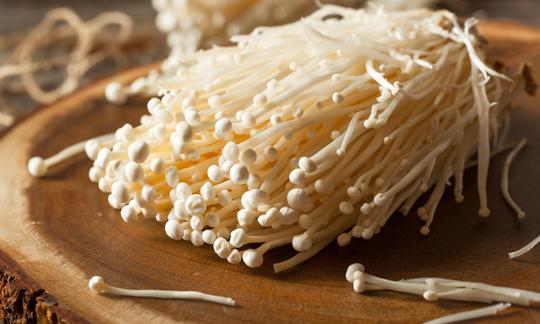

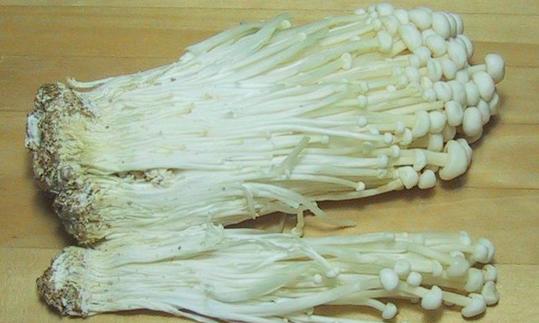

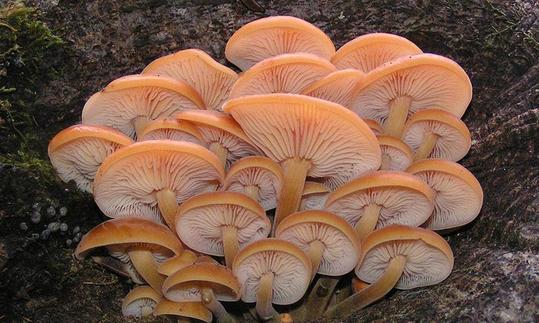

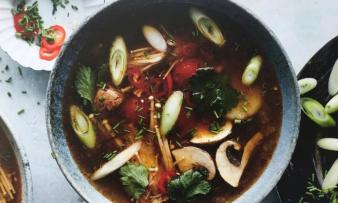
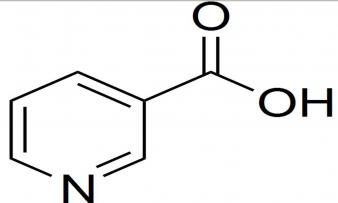




Comments